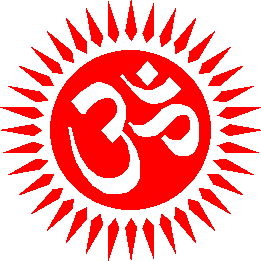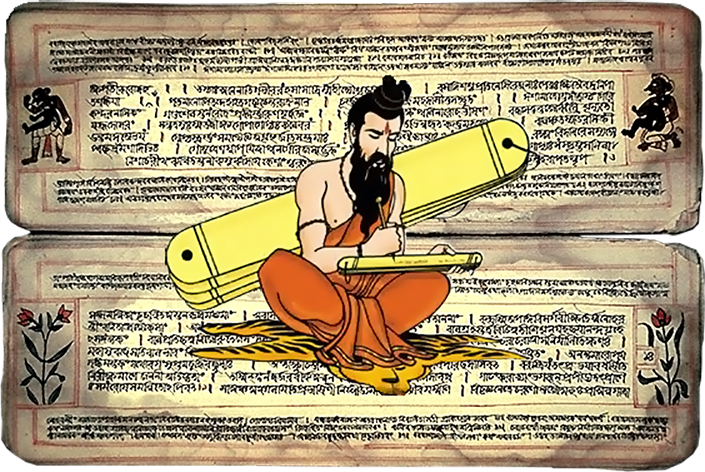Early Foundations
According
to theories advanced by eighteenth- and nineteenth-century European
scholars, the highly organized cultures of the Indus Valley and other
parts of the subcontinent were overrun by lighter-skinned nomadic
invaders from some homeland to the north, whose peoples also spread
westward and developed European civilizations. The theory argued that the Vedas,
the religious texts often referred to as the foundations of Hinduism, were the product of invaders and not of
indigenous Indians, or perhaps a combination of both cultures.


The
theory of an invasion of, and religious influence on, the Indus Valley
civilizations by “Aryans” from the north was based largely on
linguistic similarities between classical European languages such as
Latin and Greek to Sanskrit, the ancient language in which the Vedas
were composed. Similarities were also noted bewteen Vedic religious
traditions and those of the ancient Iranian Zoroastrian faith. However,
the word “Aryan” is used in Vedas to mean a noble person who speaks
Sanskrit and practices the Vedic rituals. It is not a racial category.
Nevertheless, the idea of an invasion of the Indus Valley by “Aryans”
persisted until recent times, when it has become the subject of intense
research by scholars of historical linguistics, archaeology,
anthropology, and textual analysis. There is as yet not confirmed
evidence of what actually happened, and the “Aryan Invasion Theory” is
strongly contested by many scholars who think there is no proof to
support it. (Living Religions, 73)
|
Agni Suktam
Hymn to Agni
- I pray to Agni, the household priest who is the god of the
sacrifice, the one who chants and invokes and brings most treasure.
- Agni earned the prayers of the ancient sages, and of those of
the present, too; he will bring the gods here.
- Through Agni one may win wealth, and growth from day to day,
glorious and most abounding in heroic sons.
- Agni, the sacrificial ritual that you encompass on all sides — only
that one goes to the gods.
- Agni, the priest with the sharp sight of a poet, the true and
most brilliant, the god will come with the gods.
- Whatever good you wish to do for the one who worships you, Agni,
through you, O Angiras, that comes true.
- To you, Agni, who shine upon darkness, we come day after day,
bringing our thoughts and homage
- to you, the king over sacrifices, the shining guardian of the
Order, growing in your own house.
- Be easy for us to reach, like a father to his son. Abide with us,
Agni, for our happiness.
|

The Upanishads
(c. 600-400 BCE)

In the
beginning there was
Existence
alone — One only, without a second. He, the One,
thought to
himself: Let me
be many, let me grow forth. Thus out of himself he projected
the
universe, and having projected out of himself the universe, he entered
into every being. All that is has its self in him
alone. Of
all things he is the subtle essence. He is the truth. He is
the
Self. And that, ... THAT ART THOU. (Living Religions, 77 [Chandogya
Upanishad])
How
does this compare with
Jewish, Christian, and/or Islamic
conceptions
of creation?
|
III. Karma, Rebirth & Moksha The
Upanishads express several doctrines central to all forms of Hinduism.
One is reincarnation. In answer to the universal question, "What
happens after we die?" the rishis taught that the soul leaves the dead
body and enters a new one. One takes birth again and again in countless
bodies — perhaps as an animal or some other life form —
but the self remains the same. Birth as a human being is aprecious and
rare opportunity for the soul to advance toward its ultimate goal of
liberation from rebirth and merging with the ultimate reality of Brahman.
Karma
is an important related concept. Karma means action, and also the consequences of action. Every act we make,
and even every thought and every desire we have, shapes our future
experiences. Our life is what we have made it. And we ourselves are
shaped by what we have done:
| “As a man acts, so does he become. ... A man
becomes pure through pure deeds, impure through impure deeds.” |
Not only
do we reap in this life the good or evil we have sown; they also follow
us after physical death, affecting our next incarnation. Ethically,
this is a strong teaching, for our every move has far-reaching
consequences.
The
ultimate goal, however, is not creation of good lives by good deeds,
but a clean escape from the karma-run wheel of birth, death, and
rebirth, or samsara.
To escape samsara is to achieve moksha, or liberation from the
limitations of space, time, and matter through realization of the
ultimate reality. Many lifetimes of upward-striving incarnations are
required to reach this transcendence of earthly miseries. This desire
for liberation from earthly existence is one of the underpinnings of
classical Hinduism, and of Buddhism as well. (Living Religions, 77-8)
Realise
the Brahman
in whom can be found heaven, the earth, and the atmosphere. In him
reside your senses and your heart. Forget everything else and attain
the one and only Brahman.
That is the way to salvation. ...
He is the fount of all
wisdom; he is omniscient. The Brahman
resides in the radiance of the heart. He rules over the mind and life.
He is bliss. He is immortality. The learned ones are those who can
visualise the Brahman
in their own atmans.
He
is the
cause. He is action. When an individual visualizes the Brahman, his
heart is freed from all bondage. All his doubts are dispelled. He rises
above the confines of mere action. ... (Anthology of Living Religions, 65 [Mundaka Upanishad])
|
How does the goal of "liberation" compare with the goals of other traditions that we've studied?
|
|






